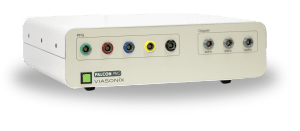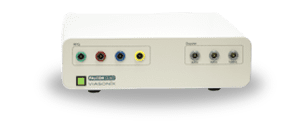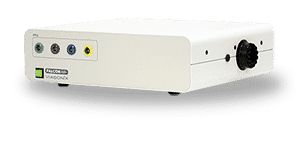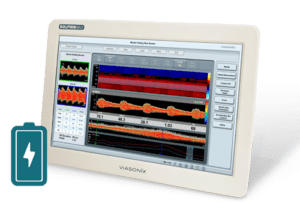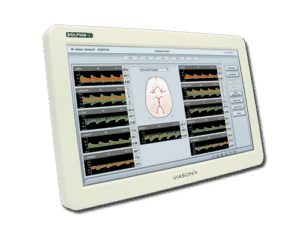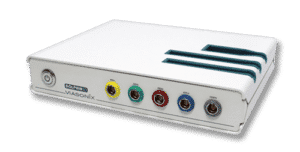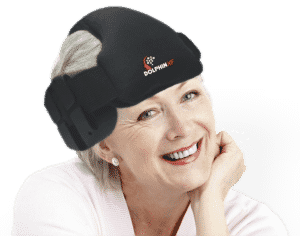What is Venous Reflux?
The Venous Reflux test is used to determine the competence of the superficial venous valves in the calves of the legs. This test is performed with a DC PPG sensor.
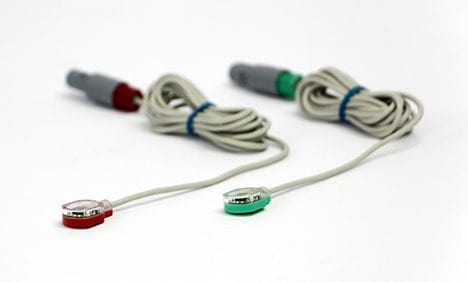
When venous valves do not function properly, they may “leak,” causing blood flow in the veins to reverse. This, in turn, causes improper venous blood flow and blood pooling in the veins of the legs, which can lead to a variety of venous insufficiency diseases.
The Venous Reflux test is a common non-invasive diagnostic examination performed with a Photoplethysmography (PPG) sensor. It can be used to determine the competence of the venous valves in the lower legs.
Who Needs a Venous Reflux Test?
When patients experience symptoms like leg pain, heaviness, swelling, varicose veins, or changes in their skin, the Venous Reflux test may be necessary. These symptoms might point to a potential venous valve dysfunction.
In addition, the Venous Reflux test assesses chronic venous insufficiency, evaluates treatment effectiveness, aids preoperative evaluation, and monitors postoperative recovery in patients with venous disorders.
In some cases, the test may not be recommended or reliable. These cases include patients with Active deep vein thrombosis (DVT), Acute Inflammatory Conditions, Skin Integrity Issues, and allergic reactions to the adhesive used to attach the PPG sensor. in such cases, consider alternative methods or materials.
A targeted diagnostic evaluation of Venous Reflux test helps healthcare professionals make informed treatment decisions, improving patient care and outcomes.
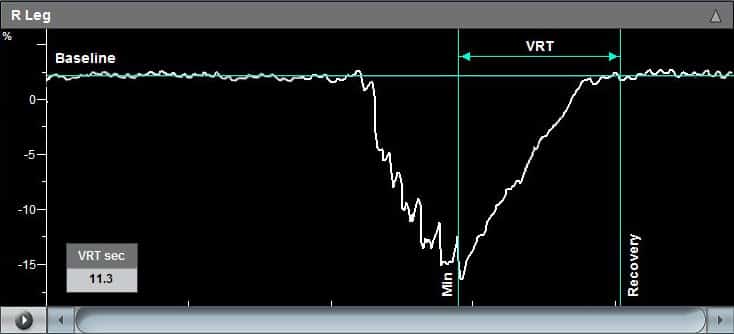
How to Perform Venous Reflux Test
Performing a Venous Reflux test requires proper technique and adherence to established protocols.
Required Equipment
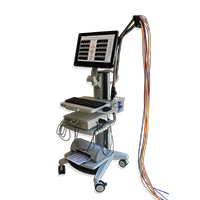
Vascular
Machine
Machine
PPG Disk
Sensors
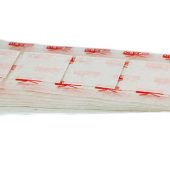
Adhesive
Stickers
Inflatable Cuffs
Here is a step-by-step guide on how to perform a Venous Reflux test:
- Preparation: Ensure that the patient is positioned comfortably, preferably in an upright sitting position. The patient’s legs can either be dangling without touching the floor or placed flat on the ground, depending on the specific protocol followed.
- Sensor Placement: Attach a Photo-plethysmograph (PPG) sensor to each leg above the ankle in the posterior tibial artery region. Secure the sensors firmly using appropriate adhesive or straps. The PPG sensor detects changes in blood volume and is crucial for capturing the necessary data during the test.
- Baseline Signal: Once the sensors are properly positioned, allow the patient to sit still and attain a steady baseline Direct Current (DC) PPG signal. This baseline signal serves as a reference point for the subsequent measurements.
- Leg Dorsiflexions: Instruct the patient to perform multiple rapid leg dorsiflexions. This motion involves flexing the foot towards the shin, as if pulling the toes upward. The number of dorsiflexions may vary depending on the specific protocol but is typically around 10 repetitions.
- Venous Blood Emptying: As the patient performs the leg dorsiflexions, the venous blood in the calf veins is driven in the proximal direction towards the heart. This causes the PPG signal to drop sharply, reflecting the emptying of venous blood.
- Stillness and Refilling: After completing the leg dorsiflexions, instruct the patient to remain still without moving the feet. This allows the veins in the legs to refill with blood. Consequently, the PPG signal starts to rise back towards the initial baseline level.
- Venous Recovery Time (VRT): Measure the duration from the end of the dorsiflexions (maximal PPG signal drop) until the signal returns to baseline. This period is referred to as the Venous Recovery Time (VRT). VRT is a significant parameter indicating the competence of the venous valves. A slow recovery time suggests competent valves, while a fast VRT raises suspicion of possible venous valve incompetency.
- Venous Tourniquet (if necessary): In cases where the Venous Reflux test indicates suspicion of venous insufficiency, a venous tourniquet can be applied at various positions above or below the knee. This allows for discrimination between deep and superficial valve incompetency.
This step-by-step guide for performing a Venous Reflux test is for informational purposes only. Healthcare professionals should rely on their expertise, clinical judgment, and institutional protocols for accurate administration and interpretation. Additional clinical information, patient history, physical examination, and other diagnostic tests may be necessary for comprehensive evaluation.
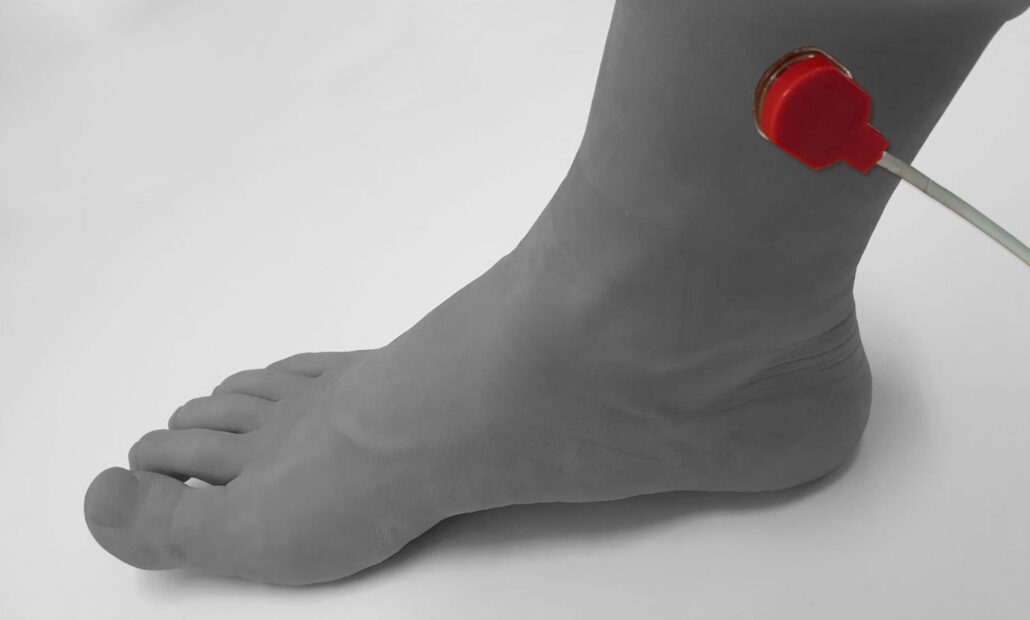
Using the Falcon for Venous Reflux Test
There are several advantages to using the Falcon vascular machine for Venous Reflux Test, all of which contribute to a quick and easy diagnostic procedure.
The following are some benefits of performing the Venous Reflux test with the Falcon system:
- Dedicated Venous Reflux Test Protocol: The Falcon has a dedicated Venous Reflux Test protocol, which ensures streamlined and standardized test administration. This protocol walks the examiner through the steps required to complete the test correctly.
- Fast and Efficient Diagnosis: By supplying real-time data and automating certain parts of the test, the Falcon system allows a quick diagnosis. To easily measure Venous Recovery Time (VRT), you can acquire a steady-state PPG signal and automatically place baseline and recovery time cursors.
- Easy Sensor Attachment: The Falcon disk PPG sensor, which comes with a special double-sided adhesive sticker, ensures a secure and convenient attachment to the lower calf. This design makes sensor placement easier, saving time and effort during setup.
- Adjustable Time Cursors: With the Falcon, if the PPG signal does not recover to baseline, you can move and adjust the time cursors. This flexibility improves customization and accommodates interpretation criteria.
- Quantitative Diagnosis: By measuring the VRT parameter, the Falcon system provides a quantitative diagnosis that allows you to assess the competence of venous valves.
- Extension with Tourniquet Cuff: By incorporating a tourniquet pressure cuff, the Falcon system enables an extended Venous Reflux test protocol. Use this feature to distinguish between deep and superficial valve incompetency. With this option, the cuff can be applied in a variety of positions above or below the knee, assisting you in determining the location of venous insufficiency.
- Comprehensive Evaluation: Beyond the Venous Reflux test, the Falcon system has additional diagnostic capabilities. It has a variety of clinical applications, such as segmental blood pressures, the Ankle Brachial Index (ABI), Doppler measurements, and more. This versatility allows for a comprehensive evaluation of peripheral vascular conditions.
These features of the Falcon system improve both the efficiency and diagnostic capabilities of the Venous Reflux test. By empowering examiners to perform the test with confidence, it facilitates effective decision-making and ultimately leads to improved patient care.
Expected Results
The expected results of the Venous Reflux test using the Falcon system are based on the Venous Recovery Time (VRT) parameter measurement. This measurement value is used to assess the competence of superficial venous valves in the calves of the legs and serves as an index of venous valve patency.
The following are the expected outcomes and their interpretations:
- Normal Result: A VRT value of more than 20 seconds is considered normal. A VRT value in this range indicates that the venous valves are competent and that there is adequate venous blood flow without reflux or insufficiency.
- Abnormal Result: A VRT value less than 20 seconds indicates venous reflux and possibly venous valve insufficiency. This indicates that the venous valves are not functioning properly, causing blood flow in the veins to reverse.
It is important to note that the VRT parameter provides a quantitative diagnosis of the Venous Reflux test on its own. Based on the patient’s clinical history, symptoms, and additional diagnostic findings, healthcare professionals may need to conduct additional evaluation and interpretation. In some cases, applying a venous tourniquet above or below the knee can help distinguish between deep and superficial valve incompetency, providing additional information for diagnosis.
A healthcare professional, such as a vascular specialist, should be consulted for a thorough assessment and interpretation of the Venous Reflux test results in the context of the patient’s specific condition.
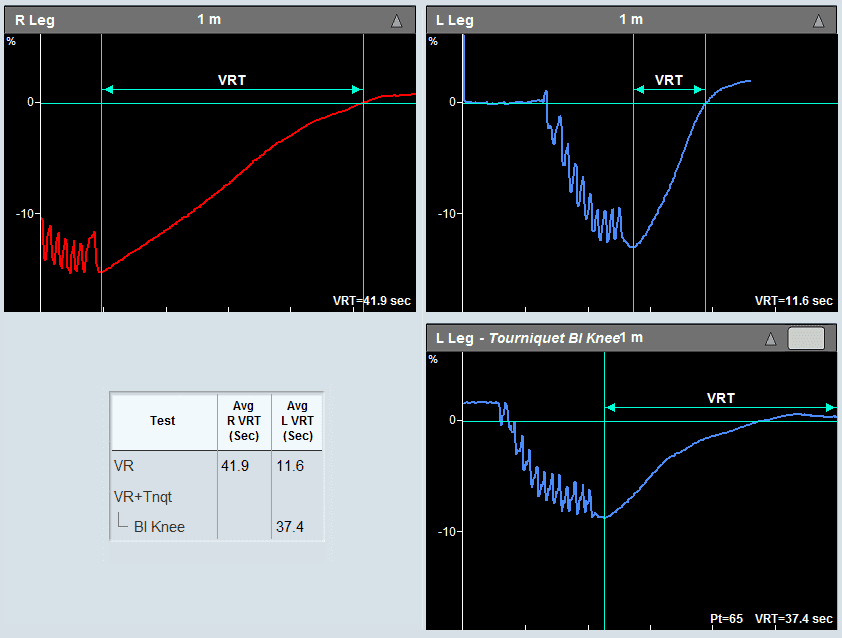
Selected Literature
Diagnostic evaluation of chronic venous insufficiency, Patrick C Alguire and Barbara M Mathes, Official reprint from UpToDate, 2017
Photoplethysmographic Venous Refilling Times Following Ultrasound Guided Foam Sclerotherapy for Symptomatic Superficial Venous Reflux: Relationship with Clinical Outcomes, Darvall et al., Eur J Vasc Endovasc Surg (2010) 40, 267e272
Peripheral vascular disease assessment in the lower limb: a review of current and emerging non‑invasive diagnostic methods; Shabani Varaki et al, BioMed Eng OnLine (2018) 17:61
Ultrasound Diagnosis of venous Insufficiency, Marsha M. Neumyer, in “Introduction to Vascular Ultrasonography”, Ed. Pellerito and Polak, Elsevier Health Sciences, 2012, Ch 24, pp 408-428
Disclaimer of Information & Content
The content of Viasonix Ltd. website is for information only, not advice or guarantee of outcome. Information is gathered and shared from reputable sources; however, Viasonix Ltd. Management is not responsible for errors or omissions in reporting or explanation. No individuals, including those under our active care, should use the information, resources or tools contained within this self-diagnosis or self-treat any health-related condition. Viasonix Ltd. Management gives no assurance or warranty regarding the accuracy, timeliness or applicability or the content.
